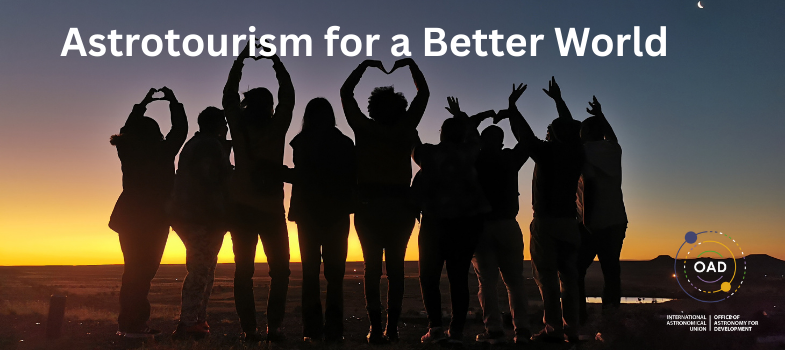What is Astrotourism?
Astrotourism is the intersection of astronomy (the study of objects in outer space) and tourism (visiting places for recreational activities). Astrotourism is a niche travel industry that focuses on celestial events, dark sky destinations, and space-related activities. The words ‘astrotourism’, ‘celestial tourism’ and ‘dark sky tourism’ are sometimes used interchangeably, although there is no official consensus about their definitions.
The global ecotourism industry worldwide was estimated at $172.4 billion in 2022, and forecast to reach $374.2 billion in 2028. The trend of experience tourism has been steadily rising over the past years, with the personalised travel and experiences market size estimated to reach $447.3 billion globally by 2030. As these industries grow and become more competitive, it becomes important to imagine tourism products that appeal to travellers seeking these kinds of experiences, and to explore and reimagine various forms of tourism.
Nighttime is a relatively untapped tourism asset so far. Astrotourism is a relatively recent industry that has capitalised on the pristine dark skies in places to sate their scientific curiosity about the night sky. While astrotourism is traditionally science-focused, this guide hopes to expand the definition of what is possible with the night sky and tourism by re-embedding our collective fascination with the night sky into a broader context that can align with ecotourism, cultural tourism, experience tourism, and sustainable tourism principles.
With an estimated 8 out of every 10 people living under light polluted skies, areas with low levels of light pollution have an incredible opportunity to offer travellers unique experiences. Nighttime activities also offer tour providers reduced competition compared to daytime activities, and almost all cultures have unique relationships to nighttime and the night sky, creating an ideal market opportunity for tourism activities at night.
The Office of Astronomy for Development (OAD) champions astrotourism through three interconnected pillars: economic development, environmental sustainability, and cultural preservation with social inclusion. Astrotourism drives economic growth in rural and underserved communities by creating jobs, such as tour guides and hospitality roles, and boosting local businesses like accommodations and restaurants. It also promotes environmental sustainability by advocating for the protection of dark skies and natural ecosystems, encouraging practices that minimise light pollution and preserve pristine stargazing environments. Equally vital, astrotourism celebrates cultural heritage by sharing indigenous astronomical knowledge and traditional sky stories, fostering inclusivity to ensure local communities are empowered and directly benefit from tourism initiatives. Through these pillars, the OAD harnesses astrotourism’s potential to inspire wonder, support livelihoods, and safeguard both the environment and cultural legacies. Each pillar will be discussed in detail.
![]()
